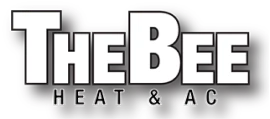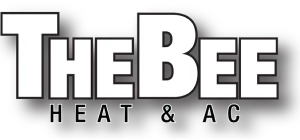You’re sweating hard, and you reach over to discover that your AC is blowing hot air straight onto your face.
On This Article
hide
1)
Essential Things to Check When Your AC Stops Blowing Cold Air
1.1)
1- Condenser Freezes Up Due to Poor Air Flow
1.2)
2- Leaking Refrigerant
1.3)
3- Faulty Thermostat
1.4)
4- Clogged Up or Dirty Filters
1.5)
5- Malfunctioning Compressor
1.6)
6- Leaking Insulated Ducts
1.7)
7- Power Malfunctioning
2)
What to Do Instead to Fix Cold Air Flow
2.1)
Step1-
2.2)
Step2-
2.3)
Step3-
3)
Wrapping it Up!
4)
FAQs
4.1)
Should I turn off the AC if it’s not cooling?
4.2)
Why is my AC not cooling to the set temperature?
4.3)
Why is my AC cooling so slow?
Next thing you know, you are contemplating your life choices and why you chose the air conditioner you did. Don’t worry; we have all been in a position where the AC suddenly stops throwing cold air, and you desperately want to fix it.
But guess what? Blowing cold air rarely has anything to do with your AC model and more what goes inside the mechanics of AC functioning.
Read – Choosing the Right Air Conditioner with Pros and Cons
Troubleshooting your AC is usually easy when you know what to do about it. In this article, we will help you navigate how to diagnose why your AC isn’t blowing cold air.
Essential Things to Check When Your AC Stops Blowing Cold Air
1- Condenser Freezes Up Due to Poor Air Flow
Poor airflow is one of the most common reasons for restricted cold air.
How do you know airflow is your problem here? Pretty simple!
If you see some icing on the line outside your unit, chances are, your compressor is getting restricted airflow, causing it to go below freezing point and freezing any air or moisture it comes in contact with.
This can be due to blocked air filters, faulty fan motors, or a blocked grill. In this case, you might have to rely on a professional to restore the cold air in your AC immediately.
Read – When is the Best Time to Tune-Up an Air Conditioner?
2- Leaking Refrigerant
Refringant pressure and temperature regulation are integral to your air-conditioner’s functionality. The temperature is designed to maintain a running temperature between 38 F to 40 F.
As the air passes through the coil (taking away all the humidity and heat from the air) and blows cold air into your living area, a refrigerant leak can cause the temperature to drop below freezing and cause ice to build up on the frozen coil.
Once the coil is frozen, the hot, humid heat flows into your living room. Although your AC might still be blowing some air due to the frozen coil, you won’t get any cooling in your room.
3- Faulty Thermostat
A wrong-calibrated or broken thermostat can make your air conditioner misinterpret the required temperature. This can make the temperature go up and down based on what your AC understands.
Always ensure your settings are checked and set to the right temperature. However, if the temperature is set correctly, you might have to call in an HVAC technician to check your thermostat.
4- Clogged Up or Dirty Filters
We often overlook cleaning our air conditioners, resulting in messy clogged filters. Filtering air is what these filters do best, yet they also require occasional cleaning to ensure they are blowing cold air.
Dust, pollens, debris, dirt, and other pollutants inside the room restrict airflow and ultimately compromise the unit’s capacity to throw cold air. Unfiltered airflows can be even dangerous for your overall health if they are not fixed otherwise.
With more debris stuck in the filters, the unit tries to work harder to keep the unit cool.
However, this may lead to the coil freezing and icing up, resulting in little to no airflow reaching your home and causing the house to heat up quickly. The constant wear and tear will lead to costly repairs if fixed after some time.
5- Malfunctioning Compressor
If your compressor is old and rusty, chances are your AC functioning has more to do with the compressor’s age.
A compromised compressor quickly loses its cooling capacity. You might not notice it initially, but a compromised compressor unit usually starts with less cold air flow and eventually blows warm air when it loses all effectiveness oftentimes, this is related to refrigerant charge and not the compressor itself, and this can be diagnosed by checking your refrigerant levels to ensure they are at the proper level.
Some of the most common reasons for a compressor failure can be;
Technical problems (mechanical failure of your compressor unit. This typically can only be fixed and diagnosed by a professional)
Electrical issues ( an issue with your power supply)
Dirty and clogged-up filters
Low or overcharged refrigerant levels
Lack of maintenance for extended periods (it must be done at least bi-annually to enhance your unit’s longevity).
6- Leaking Insulated Ducts
If you have a duct system in your home, clogged up or leaking ducts can be a major setback for the proper cool airflow. This can also happen due to poor installation processes or wear and tear over time.
A compromised duct system can be the reason the air loses its coolness before making it to your room.
Read – How to Prepare Your HVAC for Spring and Summer
7- Power Malfunctioning
You should check the voltage in your home. Alot of people need to pay more attention to the importance of suitable voltage and how important it is for the vitality of your electric appliance, especially ACs.
You should check the voltage and its reading before and after tuning your AC. In case of a voltage drop, the compressor will not function properly, causing it to blow out hot air. Next, check if your AC is plugged in directly or through an extension cord.
This may not seem like a probable reason, but improper voltage or an issue with the power supply can cause a significant problem with your system.
One of the best ways to avoid such a situation is to call a professional HVAC technician to diagnose and correct the problem.
What to Do Instead to Fix Cold Air Flow
Depending on what issue is causing your AC to act up, here are some proven ways to manually help fix cold airflow.
Step1-
If AC filters are dirty and clogged up, immediately remove and clean them.
Step2-
If your thermostat is acting up, set it to the off position and turn it back on to cooling mode. If your thermostat is acting up, set it to the off position and turn it back on to cooling mode.
After you set it to your desired temperature, watch the system to see if it is on and cooling. You can also check or replace the batteries to ensure the thermostat sends a good signal.
Step3-
Set the fan control to the “on” position in case of ice buildup, let it run for at least 30-120 minutes, and leave cooling mode off. In some models, you might find a timer set for fan cleaning.
This way, the ice build will melt away from the coil; after 2 hours, the fan will be put back into auto mode, and the thermostat will be turned into cooling mode.
Set your temperature lower than room temperature, and let it work for a few hours.
If it starts cooling and works fine, you are good to go. If it starts heating up, even after changing the filter, you might want to call in a professional for a second opinion ASAP.
Wrapping it Up!
If your AC goes out in the middle of summer, don’t worry! This is often not as big of a problem as you might think, and a professional can help you get the system properly diagnosed and taken care of.
With the professional help and expertise of TheBee Heat & AC, we will fix your air conditioner and keep it up and running all summer long!
Contact us today to get your AC back up and running!
FAQs
Should I turn off the AC if it’s not cooling?
It’s best to turn off your AC and immediately check the switch and plug-in area. If it’s heating up, then you might be facing power issues. If you need help, you can see what is happening with your AC unit.
Why is my AC not cooling to the set temperature?
This can be due to a faulty thermostat or a dirty filter hindering the functioning of your AC. You also should check if you have been keeping up with your AC unit’s regular service and maintenance.
Why is my AC cooling so slow?
This is a classic filter problem. Always double-check if your filters are clean and have no kind of dirt or debris stuck into them. Once thoroughly cleaned, your unit will start cooling the room faster again!

